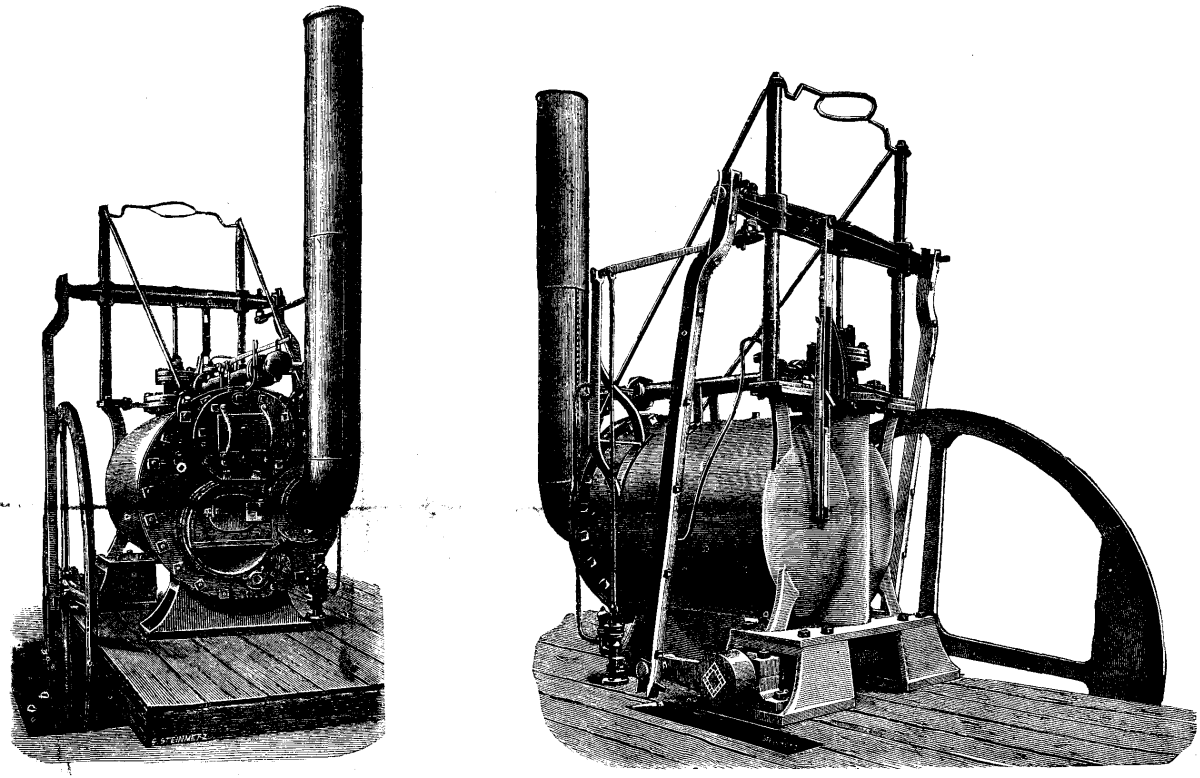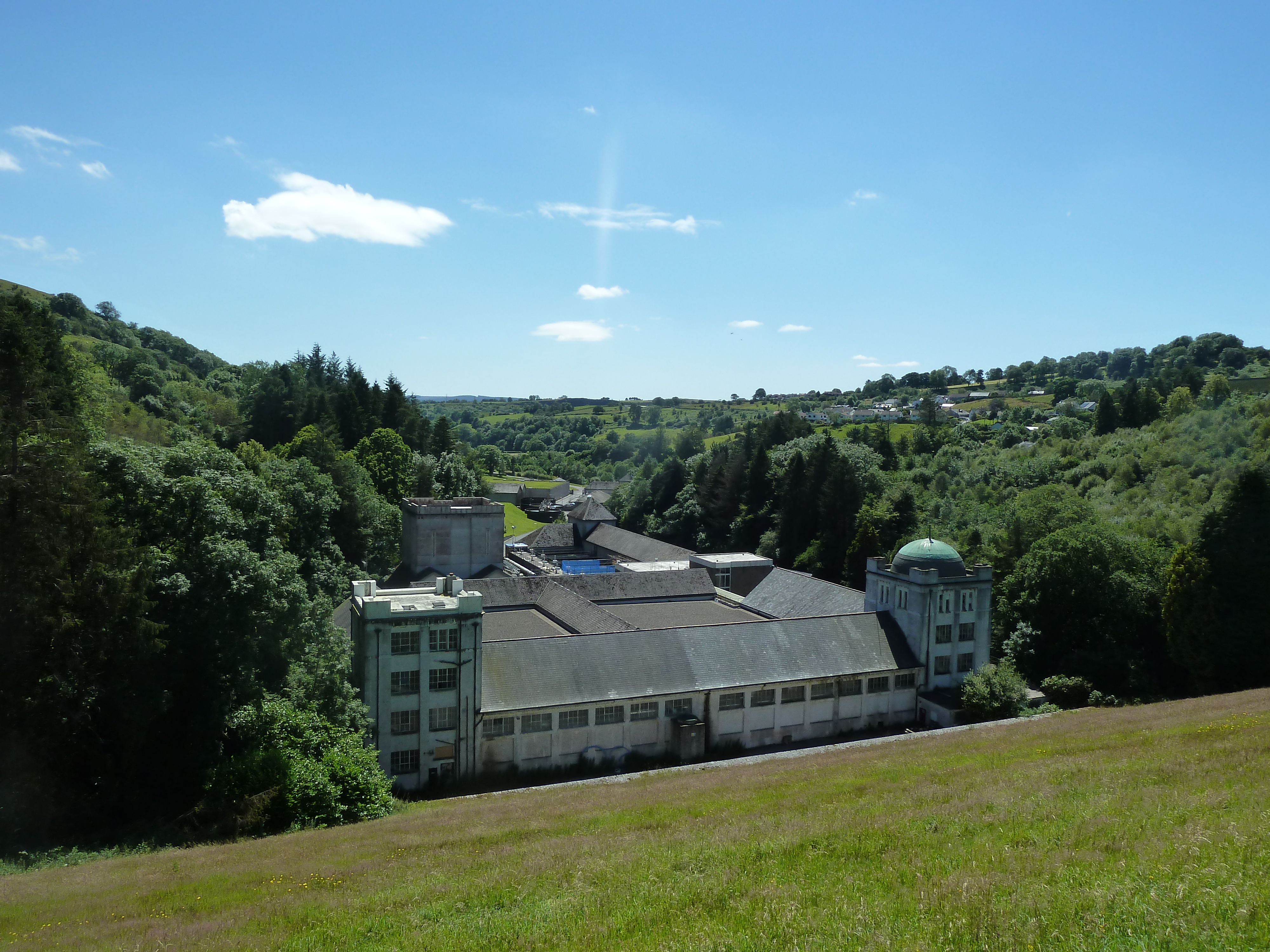|
Edwardsville, Merthyr Tydfil
Quakers Yard railway station serves the village of Edwardsville in the community of Treharris, Merthyr Tydfil, Wales. It is located on the Merthyr Tydfil branch of the Merthyr Line. Passenger services are provided by Transport for Wales. History The station was opened as "Quakers Yard Low Level" by the Taff Vale Railway in 1858. Isambard Kingdom Brunel built the Goitre Coed Viaduct, it was opened in 1841. Its height is approx 100 ft the Goitre Coed Viaduct was widened in 1862 with another stone bridge of slightly differing design sitting embedded next to the original one, this addition can easily be spotted when passing underneath the viaducts arches on the Taff Trail cycle route 8. This viaduct still exists as the gateway to the Taff Valley for the Cardiff to Merthyr Tydfil railway line. In a recent TV appearance, a Brunel expert put the Goitre Coed Viaduct as the finest example of Brunel's viaducts in Wales. Two more viaducts existed at the north end of Edwardsvill ... [...More Info...] [...Related Items...] OR: [Wikipedia] [Google] [Baidu] |
Quakers Yard
Quakers Yard ( cy, Mynwent y Crynwyr) is a village in the Merthyr Tydfil County Borough, situated where the Taff Bargoed Valley joins the Taff Valley. Quakers Yard is part of the community of Treharris. History The early place name for the district was 'Rhyd y Grug' or 'The Ford of the Rustling Waters'. This ford was a simple and easy crossing place of the nearby River Taff, close to its junction with the smaller Taff Bargoed river. The ford was replaced in later years by the narrow stone bridge over the River Taff. Quakers Yard railway station opened in 1858. During the early 17th century those who 'dissented' from the King's Religion were persecuted. This often took the form of imprisonment, or death. By about 1650 a 'dissenting group' of Baptists, independents and Quakers were worshipping at nearby Berthlwyd Farm, Pentwyn (Top of the Hill). The Quakers in turn, soon broke away to establish their own separate community. In the year 1667, these Quakers opened their own Quaker ... [...More Info...] [...Related Items...] OR: [Wikipedia] [Google] [Baidu] |
Merthyr Vale Railway Station
, symbol_location = gb , symbol = rail , image = Through Merthyr Vale railway station (geograph 4204306).jpg , borough = Merthyr Vale, Merthyr Tydfil , country = Wales , coordinates = , grid_name = Grid reference , grid_position = , manager = Transport for Wales , platforms = 2 , code = MEV , classification = DfT category F2 , years = 1 June 1883 , events = Opened , mpassengers = , footnotes = Passenger statistics from the Office of Rail and Road , mapframe=yes , mapframe-zoom = 13 Merthyr Vale railway station is a railway station serving the villages of Merthyr Vale and Aberfan in Merthyr Tydfil, Wales. It is located on the Merthyr branch of the Merthyr Line. Passenger services are provided by Transport for Wales. History Since 2008 the station has had a passing loop installed. This allowed a half ... [...More Info...] [...Related Items...] OR: [Wikipedia] [Google] [Baidu] |
Tornado
A tornado is a violently rotating column of air that is in contact with both the surface of the Earth and a cumulonimbus cloud or, in rare cases, the base of a cumulus cloud. It is often referred to as a twister, whirlwind or cyclone, although the word cyclone is used in meteorology to name a weather system with a low-pressure area in the center around which, from an observer looking down toward the surface of the Earth, winds blow counterclockwise in the Northern Hemisphere and clockwise in the Southern. Tornadoes come in many shapes and sizes, and they are often visible in the form of a condensation funnel originating from the base of a cumulonimbus cloud, with a cloud of rotating debris and dust beneath it. Most tornadoes have wind speeds less than , are about across, and travel several kilometers (a few miles) before dissipating. The most extreme tornadoes can attain wind speeds of more than , are more than in diameter, and stay on the ground for more than 100 ... [...More Info...] [...Related Items...] OR: [Wikipedia] [Google] [Baidu] |
Board School
School boards were public bodies in England and Wales between 1870 and 1902, which established and administered elementary schools. School boards were created in boroughs and parishes under the Elementary Education Act 1870 following campaigning by George Dixon, Joseph Chamberlain and the National Education League for elementary education free from Anglican doctrine. Education was still not free of fees. Members were directly elected, not appointed by borough councils or parishes. Each board could: *raise funds from a rate *build and run non-denominational schools where existing voluntary provision was inadequate *subsidise church schools where appropriate *pay the fees of the poorest children *if they deemed it necessary, create a by-law making attendance compulsory between ages 5–13 - until the Elementary Education Act 1880 when it became compulsory for all. *were not to impose any religious education, other than simple Bible reading Unusually for the time, women were ... [...More Info...] [...Related Items...] OR: [Wikipedia] [Google] [Baidu] |
Public House
A pub (short for public house) is a kind of drinking establishment which is licensed to serve alcoholic drinks for consumption on the premises. The term ''public house'' first appeared in the United Kingdom in late 17th century, and was used to differentiate private houses from those which were, quite literally, open to the public as "alehouses", " taverns" and " inns". By Georgian times, the term had become common parlance, although taverns, as a distinct establishment, had largely ceased to exist by the beginning of the 19th century. Today, there is no strict definition, but CAMRA states a pub has four characteristics:GLA Economics, Closing time: London's public houses, 2017 # is open to the public without membership or residency # serves draught beer or cider without requiring food be consumed # has at least one indoor area not laid out for meals # allows drinks to be bought at a bar (i.e., not only table service) The history of pubs can be traced to Roman taverns ... [...More Info...] [...Related Items...] OR: [Wikipedia] [Google] [Baidu] |
Deep Navigation Colliery
Deep Navigation Colliery was a coal mine in South Wales, that operated from 1872 until 1991. Located next to the co-developed village of Treharris in the borough of Merthyr Tydfil, on development it was the deepest coalmine in South Wales Coalfield by some . Producing the highest quality steam coal, it powered both the Cunard passenger steamers RMS ''Mauretania'' and RMS ''Lusitania'' in their successful attempts at the Blue Riband prize for the most rapid Atlantic Ocean passage. The mine is also thought to have been one of several locally that provided coal to the RMS Titanic; tests carried out on coal found in the ship's wreck have shown that most of the coal on board originated in South Wales. One of the first collieries in South Wales to have shafts wound by electricity, it was the first colliery in South Wales to have pit head baths for its miners. Profitable due to the quality of its coal, but financially degraded by huge volumes of water ingress throughout its working l ... [...More Info...] [...Related Items...] OR: [Wikipedia] [Google] [Baidu] |
Vale Of Glamorgan Line
The Vale of Glamorgan Line ( cy, Llinell Bro Morgannwg) is a commuter railway line in Wales, running through the Vale of Glamorgan from Barry to Bridgend, via Rhoose and Llantwit Major. Route The Barry branch starts at Cardiff West and runs to Barry Island with a single line branch from Cogan Junction to Penarth. In June 1964, the Vale of Glamorgan line between Barry and Bridgend was closed to passengers by the Beeching Axe, as set out in the report 'The Reshaping of Britain's Railways', but after 41 years, in June 2005, it was reopened to passengers with two new stations at Llantwit Major and Rhoose, and the disused bay platform (now '1A') at Bridgend was reinstated to act as a terminus for the Vale Line. The line itself had been retained for freight traffic to/from the Ford Factory in Bridgend, and to Aberthaw Power Station, as well as to provide a detour for main line trains when the direct Bridgend to Cardiff line was closed. Network Rail's mileage from Barry Juncti ... [...More Info...] [...Related Items...] OR: [Wikipedia] [Google] [Baidu] |
Steam Locomotive
A steam locomotive is a locomotive that provides the force to move itself and other vehicles by means of the expansion of steam. It is fuelled by burning combustible material (usually coal, oil or, rarely, wood) to heat water in the locomotive's boiler to the point where it becomes gaseous and its volume increases 1,700 times. Functionally, it is a steam engine on wheels. In most locomotives, the steam is admitted alternately to each end of its cylinders, in which pistons are mechanically connected to the locomotive's main wheels. Fuel and water supplies are usually carried with the locomotive, either on the locomotive itself or in a tender coupled to it. Variations in this general design include electrically-powered boilers, turbines in place of pistons, and using steam generated externally. Steam locomotives were first developed in the United Kingdom during the early 19th century and used for railway transport until the middle of the 20th century. Richard Trevithi ... [...More Info...] [...Related Items...] OR: [Wikipedia] [Google] [Baidu] |
Richard Trevithick
Richard Trevithick (13 April 1771 – 22 April 1833) was a British inventor and mining engineer. The son of a mining captain, and born in the mining heartland of Cornwall, Trevithick was immersed in mining and engineering from an early age. He was an early pioneer of steam-powered road and rail transport, and his most significant contributions were the development of the first high-pressure steam engine and the first working railway steam locomotive. The world's first locomotive-hauled railway journey took place on 21 February 1804, when Trevithick's unnamed steam locomotive hauled a train along the tramway of the Penydarren Ironworks, in Merthyr Tydfil, Wales. Turning his interests abroad Trevithick also worked as a mining consultant in Peru and later explored parts of Costa Rica. Throughout his professional career he went through many ups and downs and at one point faced financial ruin, also suffering from the strong rivalry of many mining and steam engineers of the day. ... [...More Info...] [...Related Items...] OR: [Wikipedia] [Google] [Baidu] |
River Taff
The River Taff ( cy, Afon Taf) is a river in Wales. It rises as two rivers in the Brecon Beacons; the Taf Fechan (''little Taff'') and the Taf Fawr (''great Taff'') before becoming one just north of Merthyr Tydfil. Its confluence with the River Severn estuary is in Cardiff. The river supports several species of migratory fish, including salmon, sewin (sea trout), and eel. Course From its confluence at Cefn-coed-y-cymmer, the river flows south, passing several towns. It picks up a few tributaries, such as the River Cynon, River Rhondda, Bargoed Taf and Nant Clydach. It flows through Pontypridd and through to Taff's Well, the site of Wales' only thermal spring. It flows underneath the M4 Motorway, before turning southeastward and flowing past the Cardiff suburbs of Radyr, Whitchurch, Llandaff, Pontcanna, the city centre and Grangetown, before emptying into Cardiff Bay, near to the mouth of the River Ely. Taf Fawr The Taf Fawr rises below the peak of Corn Du, ... [...More Info...] [...Related Items...] OR: [Wikipedia] [Google] [Baidu] |
Pontygwaith
Pontygwaith (Welsh,"Bridge to work" or "Bridge of the Ironworks") is a village in the Taff Valley, south of Merthyr Tydfil in Wales. A Sussex Ironmaster named Anthony Morley set up a small ironworks here in 1583. On 21 February 1804 Richard Trevithick ran the first ever steam locomotive along tracks, now known as the Merthyr Tramroad, carrying both iron ore and passengers, from Penydarren near Merthyr Tydfil, via Pontygwaith, south to Abercynon. There is little of the original village remaining today, which was inhabited and existed until approx 1977 as a terrace of ten houses and a farm. The site of the original village is accessible from the Taff Trail National cycle route 8. This leads down a heavily tree lined slope to the area that was the original village site. The bridge over the River Taff at Pontygwaith is a Grade II listed structure. and was featured in the ''Beauty and the Beast'' episode of the BBC's Merlin Merlin ( cy, Myrddin, kw, Marzhin, br, Merzh ... [...More Info...] [...Related Items...] OR: [Wikipedia] [Google] [Baidu] |
Railway Station
Rail transport (also known as train transport) is a means of transport that transfers passengers and goods on wheeled vehicles running on rails, which are incorporated in Track (rail transport), tracks. In contrast to road transport, where the vehicles run on a prepared flat surface, rail vehicles (rolling stock) are directionally guided by the tracks on which they run. Tracks usually consist of steel rails, installed on Railroad tie, sleepers (ties) set in track ballast, ballast, on which the rolling stock, usually fitted with metal wheels, moves. Other variations are also possible, such as "slab track", in which the rails are fastened to a concrete foundation resting on a prepared subsurface. Rolling stock in a rail transport system generally encounters lower friction, frictional resistance than rubber-tyred road vehicles, so passenger and freight cars (carriages and wagons) can be coupled into longer trains. The rail transport operations, operation is carried out by a ... [...More Info...] [...Related Items...] OR: [Wikipedia] [Google] [Baidu] |






